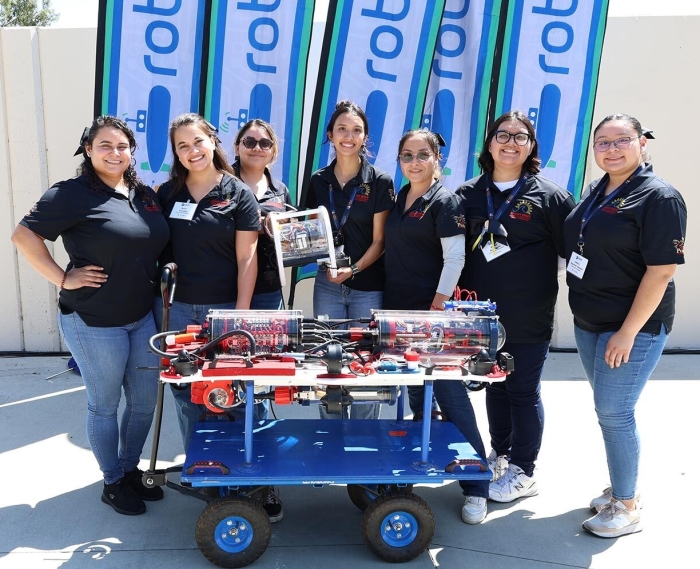Teamwork among ASU students and robots wins international competition
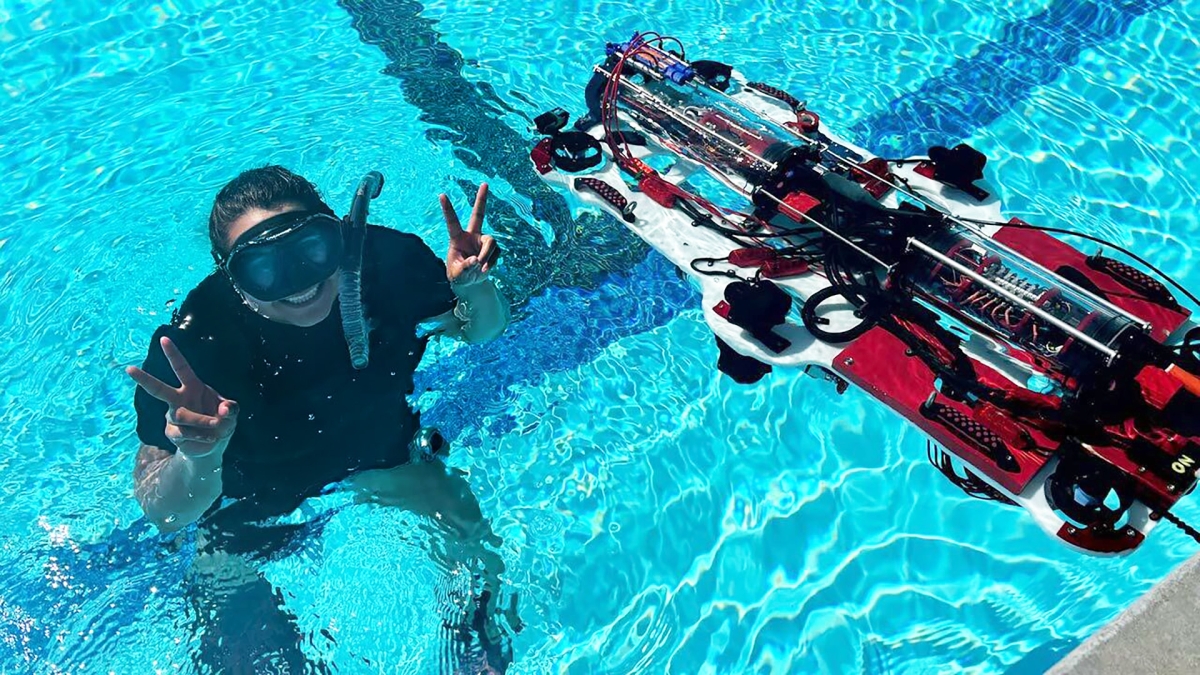
Litzi Matancillas, a recent graduate of the Ira A. Fulton Schools of Engineering at Arizona State University, is in the water at the RoboSub competition with Dragon, the robot that helped the Desert WAVE team take the top spot in the international robotics competition. Photo courtesy of Paulina Garibay Jaquez
Desert WAVE, or Women in Autonomous Vehicle Engineering, recently competed in the 27th International RoboSub Competition in Irvine, California.
The team, based out of the Si Se Puede Foundation STEM Center, is an all-women team of current students and recent graduates of the Ira A. Fulton Schools of Engineering at Arizona State University.
Facing off against 41 teams from eight countries, the team — Paulina Garibay Jaquez, Nancy Esquivel Vazquez, Katherine Vasudev, Gabriela Hernandez, Natali Rodriguez, Litzi Matancillas and Jacqueline Villanueva Castro — earned first place in the world by taking an innovative approach to the challenge.
Out in the world’s oceans, industrial underwater robots explore, map, identify and handle objects, as well as take care of important tasks such as repairing pipelines. In the 2024 RoboSub competition, teams created robots to navigate obstacles, track objects, launch torpedoes and collect samples for research.
Desert WAVE’s tandem robots, Dragon and Baby Dragon, worked together to take on these missions. Desert WAVE was one of very few teams that opted to complete the objectives using two robots.
The idea to do so developed over the summer during the ASU Underwater Robotics Camp, where one of the team members and Desert WAVE founder and mentor Daniel Frank — an assistant teaching professor in the engineering programs at the Polytechnic School, part of the Fulton Schools — mentored a high school robotics team.
Part of the robotics camp experience was competing at the National Underwater Robotics Competition, in which the high school team ultimately won its division using Baby Dragon.
Hernandez, a team member studying mechanical systems engineering, helped mentor the high school team over the summer. The experience was a full-circle moment for her, as she was a first-year student in high school when she saw Desert WAVE become a team at ASU.
“I was able to watch them become the successful team that I was able to join this year,” Hernandez says. “They inspired me to continue robotics throughout high school and have something to look forward to in college.”
She was able to help bring Baby Dragon to life over the summer and later helped pair it with Dragon, a work in progress since 2020.
“After the high school students placed first in their division and third overall, we were left with the little robot. That’s when Dragon decided to adopt Baby Dragon,” Hernandez says. “Although only being done by a handful of teams, with a lot of testing, we were able to get Dragon and Baby Dragon to communicate.”
The robots use machine vision, instruments that measure velocity, fiber optic gyros and underwater data transmitters to communicate and complete the competition assignments autonomously — without human intervention after they descend below the surface of the water.
Dragon, the larger robot, would have incurred a weight penalty and may not have been able to complete all its required tasks. So, having the smaller Baby Dragon enabled the team to complete riskier navigation maneuvers. Together, the robots were precise and even scored additional points for stylish execution of the requirements.
“These were not solutions that many other teams had even considered, which provided them an advantage in the competition,” Frank says.
Desert WAVE scored nearly 70% higher than the next team in the final phase of the competition.
Faridodin “Fredi” Lajvardi, current CEO and president of Si Se Puede Foundation and team founder and mentor, was impressed by the team’s collaboration and problem-solving abilities.
“When things got tough, they got tougher,” Lajvardi says. “After each long practice day, the team would take the robot to the hotel pool from 10 p.m. to 2 a.m. to finish tweaking and adjusting the tasks the robot had to execute. They would be back at the competition site at 7 a.m. the next day. They were determined to be the best they could be.”
Frank says the team members’ “unique perspective helped them to see the problem differently, which was a big factor in their success.”
Each member brought different skills to the table, which helped the team succeed. Rodriguez, a team member studying human systems engineering, appreciated collaborating with people in different areas outside of their degree program.
“Being able to connect with people has allowed me to grow my personal network by interacting with people from different teams, states and countries,” Rodriguez says.
Team members appreciate the opportunity to use skills they have learned in their degree programs as well as new skills outside of what they are studying. Matancillas, who recently completed studies to earn a bachelor’s degree in engineering with a concentration in robotics, benefitted from the teamwork involved in the competition.
“I learned how to adapt to work outside of my general scope and how to get results when it really mattered,” Matancillas says.
Along with bragging rights, the team won prize money and is already looking to the future, aiming to defend its title and continue making improvements to keep its spot at the top, especially as a team of all women.
“At this level, this type of team is extremely rare. There is only one other all-female team, the team from Texas A&M,” Lajvadi says.
Frank says sometimes the best solutions come from the most unlikely sources.
“Young women from the Phoenix desert may not be the first group most people would think of to build world-champion underwater robots,” Frank says, “but maybe they should be. That is what makes engineering so awesome.”
More Science and technology
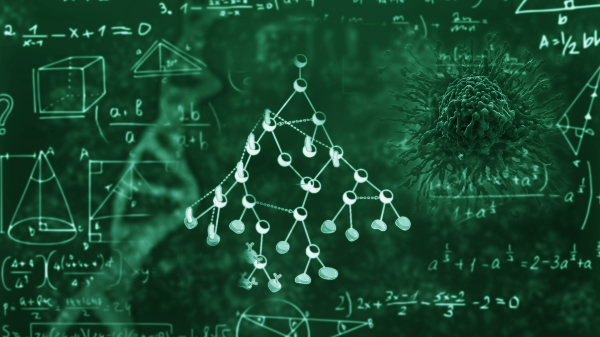
Evolving the framework of cancer theory
Cancer cells are driven by the same imperative guiding all living things: to grow, survive and reproduce. Although cancer’s evolutionary underpinnings have been recognized since the 1950s, clinicians…
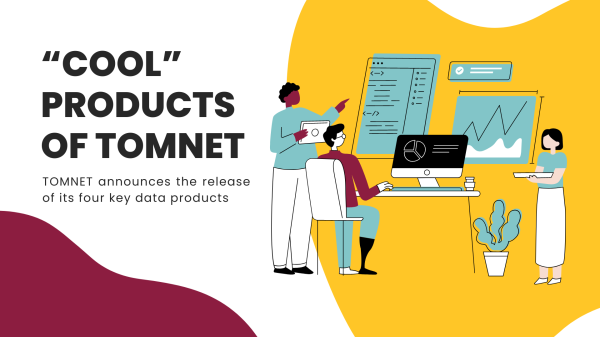
ASU travel behavior research center provides insights on the future of transportation
The Center for Teaching Old Models New Tricks, known as TOMNET, has spent the past seven years conducting research and developing tools to improve transportation systems planning methods and data.As…
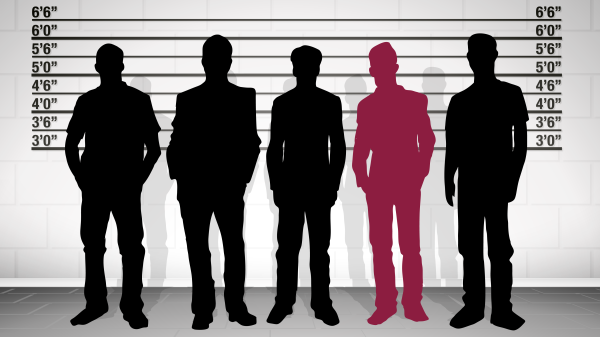
When suspect lineups go wrong
It is one of the most famous cases of eyewitness misidentification.In 1984, Jennifer Thompson was raped at knifepoint by a man who broke into her apartment. During the assault, she tried to make a…
